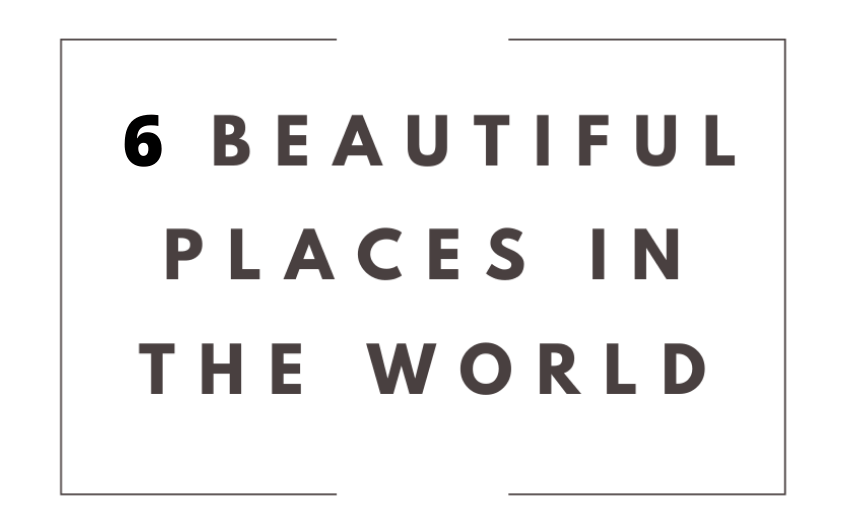The world is full of beautiful places. Such as international locations like Greece, Croatia, Chile, and Italy as well as US locations such as Colorado, Washington, South Carolina, and many other countries are the most beautiful locations in the world. Visitors may pick between beautiful mountain landscapes, brilliant spring lakes, glittering waterfalls, romantic old villages on high cliffs, and parklands, which draw millions of tourists from all across the world. in this article, we’ll discuss 5 beautiful places in the world.
Grand Canyon | USA
In the heart of the globe, a huge chasm cut by the Colorado River and over the past 1000+ years, the Grand Canyon is a steep, and wide rust is one of the beautiful places. Its pure vastness is amazing and while you see only a tiny segment, its geology that antiquity fires the imagery from the very finest viewpoint. The multicolored sedimentary rocks reflect the past and even some of the stones underneath are thousand years ago.
Mostly on steep slopes of the canyon, there is much life sprouting – you may more walk along the northern bank, which is also less congested. Most visitors are confined to the amazing views from the south river. The Yavapai Observation Station, Mary Colter’s Lookout Gallery, and Mather Point are one of the most prominent monitoring stations.
However, its great majesty and beauty are the main attractions of this Grand Canyon. The time frame of the earthly past shown in the exposed rocks in the canyon walls is possibly its most significant and significant component. For its enormous and deep earth’s climate, there is no other location on earth compared to the Grand Canyon.
Nevertheless, the canyon record is far from permanent and full. There are huge time gaps. There are several thousands of years because of lacunae in our layers which have been either destroyed by erosion or due to little or no deposit of minerals. There are large amounts of material.
Want to know the best and beautiful places to visit in NEWYORK? Must Read The Following Article?
Plitvice Lakes National Park | Croatia:
When Reviewing best places in the world we can not miss Plitvice Lakes National Park. In the lower altitudes of the Dinarides in the central highlands is located the National Park of Plitvice Lakes, the biggest national park in Croatia comprising nearly 30,000 acres. The splendid lake system of Plitvice, attracting scientists and potential visitors, stands out in a picturesque karst terrain characterized by an array of woodlands and meadows. The ponds are linked into the upper and lower lake by various waterfalls and streams above and below ground.
The former is built on mountains, with moderate relief, not too high coastlines, and surrounded by lush woods. The latter is lower and less in the partly steep calcareous canyon.
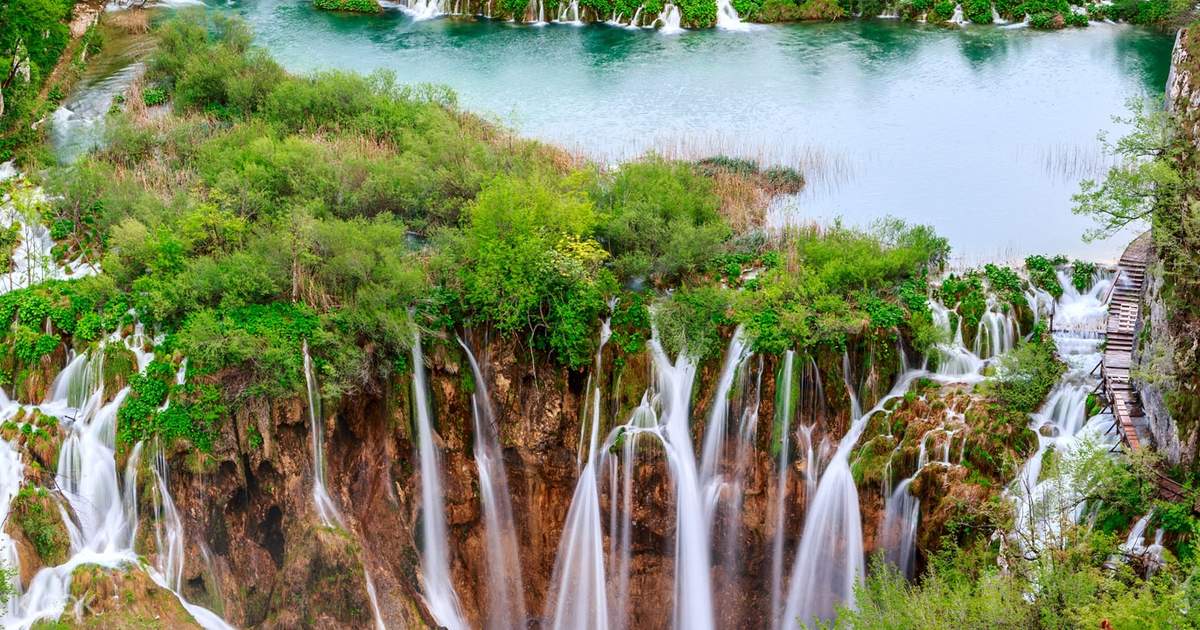
The pond ecosystem is a product of thousands of years of continuous metabolic and microstructure analysis which provide geographical borders to the tufa. The carbon dioxide is deposited by the streams flowing into the land. This geologic activity in the development of tufa combines with living creatures, including moose, vegetation, and aqueous bacteria in the instance of the Plitvice lake system. The size and natural boundaries of the whole lake system are an outstanding manifestation of the aesthetically astonishing phenomena that have been known since the end of 1800.
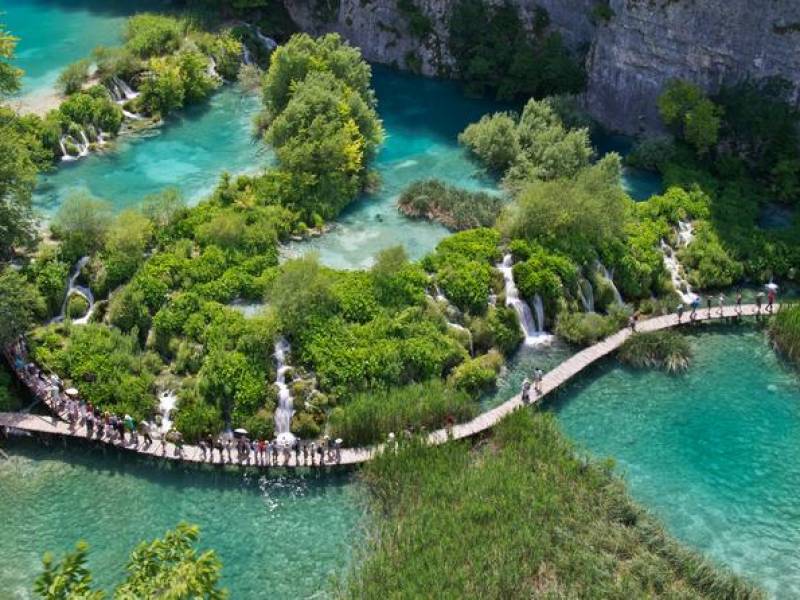
The Nature Reserve of Plitvice Lakes is commonly discussed with well-kept woods that are crucial for the maintenance of the anthropogenic activities in the treatment plant. It covering an area of 84 hectares of the ancient beech and fir forest. The park also houses remarkable biodiversity, as well as the dramatic natural beauty and the activities that seek to evolve the lakes.
The tufa barriers themselves provide living conditions for many and highly specialized non-vascular plant groups. Brown Bear, Grey Wolf, and Lynx, together with numerous uncommon species, are noted for their lush flowering across woods.
Great Barrier Reef | Australia
The Great Barrier Reef is the world’s largest coral reef ecology and a worldwide leader and leader. In 1981 almost all the ecosystems were designated a World Heritage Site, spanning an area of 348,000 km2 and a continuous latitude. This is known as GBR and comprises a broad array of shelters, extending up to 250 kilometers offshore from the low water level on the mainland. This wide range of depths includes vast deep seaside areas, middle shelves, and external reefs and more than 2000 miles deep far beyond territorial waters.
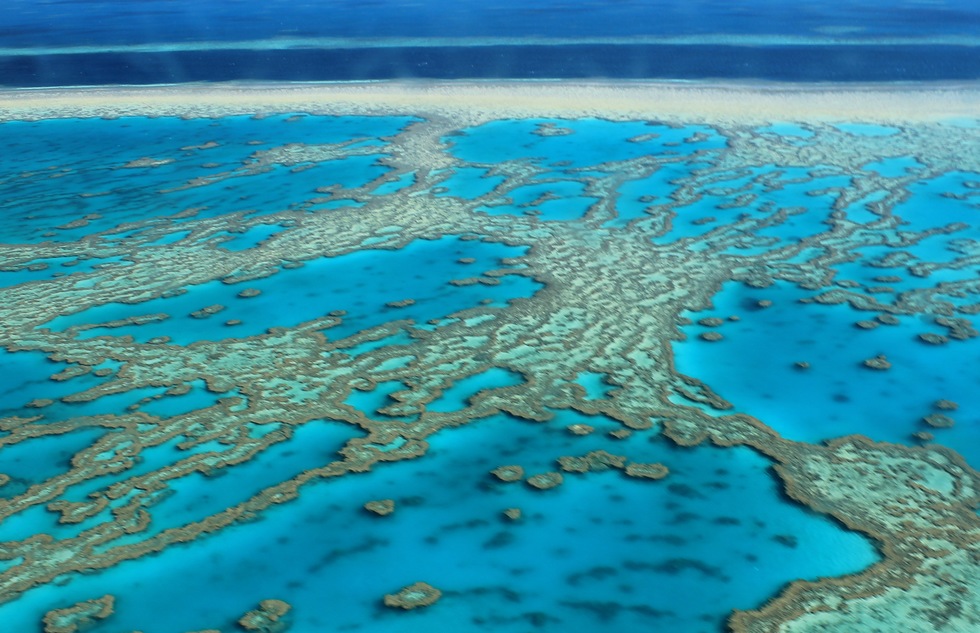
The wealthiest and most complicated ecological systems on earth are the GBR’s diverse species and environments, as well as its interconnectedness. More than 1,500 fish, 400 coral creatures and 4,000 molluscan species, and approximately 240 plant species, as well as a wide range of organisms such as a sponge, anemones, sea worms, crabs, and more. No other property of the World Heritage possesses such variety. The GBR is a great scientific and intrinsic variety, particularly the species of and enemies, and also includes a considerable diversity of plants at risk.
Moraine Lake | Canada
Moraine Lake is located 14 kilometers southeast of Lake Louise hamlet. The bright dark blue of the Iceberg is a consequence of the light birefringent of rock mean into a glacier run-off into the lake. The lake begins to evaporate in June at a height of 1 885 m. In late June, the river levels rise with their bright hue.

The lake is covered by numerous treks, from easy treks to harder excursions. The Rockpile Trail is a simple and short trail with reverse switches to the top of the volcanic dam at the rear of the ridge. Its waves are most stunning, sharp azure shades, which alter in strength throughout the summer as glaciers shrink.
Located in the rough Ten Hills valley, Glacier Lake is set among mountains, waterfalls, and heaps of rocks, producing an amazing scenery that nearly looks surreal. Sit down by the lakesides, inhale clean mountain air and scenery or go on walking and kayaking. It’s a legendary chewing location that will certainly create a lasting impact.
Niagara Falls | Canada
During the wintertime, snowboarders may have a reviving adventure of 15 kilometers (9.3 miles). Niagara Falls are three large cascades that create the Canadian-U.S. boundary. The falls on the stream Niagara between Erie Lake and Canada Lake are situated. The falls arose on the route to the Ocean during the glacial period age when the water broke down from the Great Lakes on the Niagara Escarpment. Niagara fall is one of the most Beautiful Place in The World
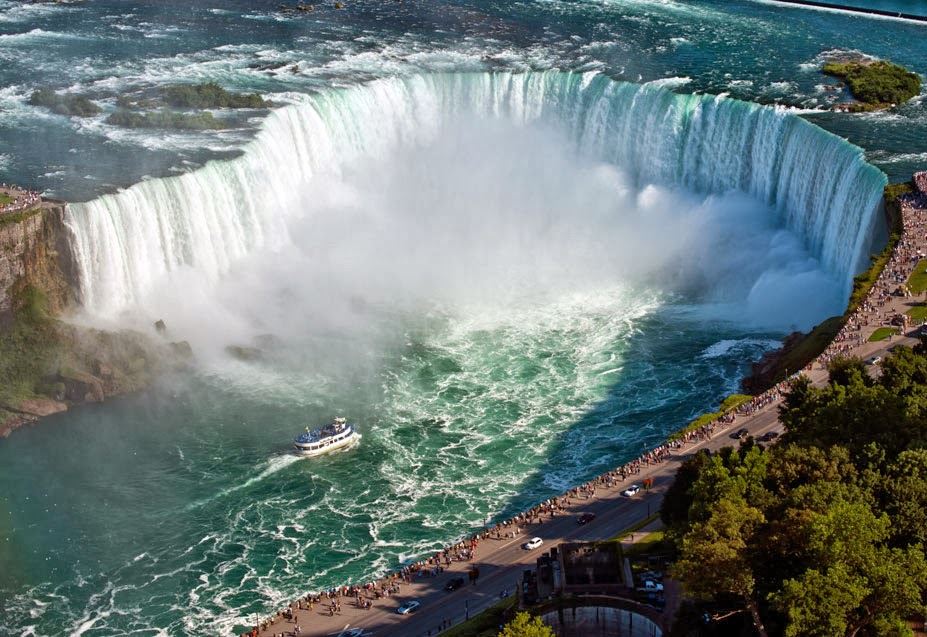
The Government Of Canada is setting ski paths that finish at the Solace Valley and Ten Mountains perspective. Due to the severe landslide risk from November to late April, entrance to the lake is not allowed during winter.
The falls are a very famous tourist attraction and drew honeymoons from those who went through the falls in the bucket to people who spread a line through the falls. The falls motivated hundreds of companies to produce beautiful art and inspire thousands of others to respect nature’s grandeur, strength, and beauty.
Lake Victoria | South Africa
Lake Victoria is common in Kenya, Tanzania, and Uganda. It is the second most popular lake and a tropical freshwater lake. Lake Victoria is on the north side of the equator. It is 68,800 km2 [km2] in total and quite deep with a maximal depth of 80 m. In its basin, the population is more than 30 million.
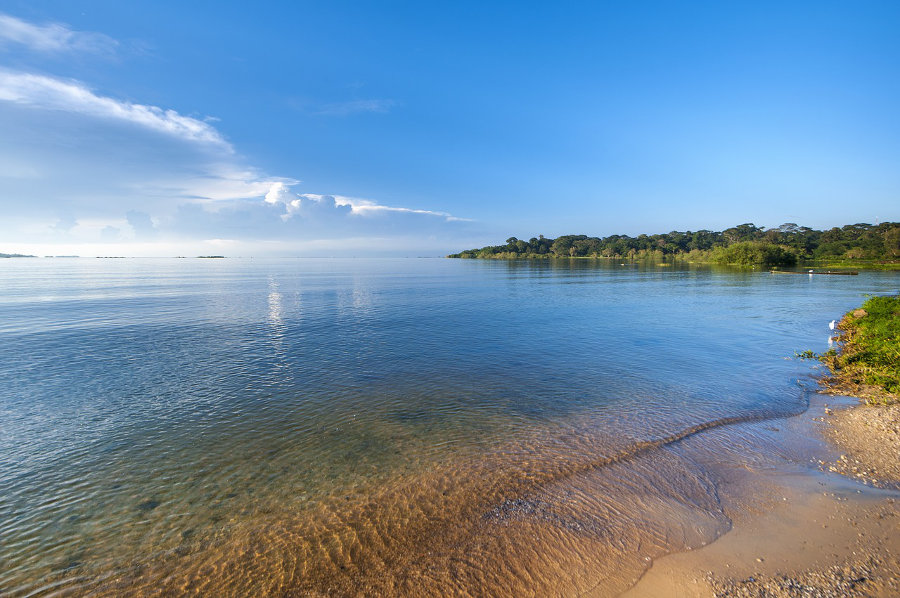
Between 1.3 million and 1.5 million animals go tens of kilometers to lakes and streams annually. Then return in their very first meadows in the Nature Reserve and also in Kenya’s Massai Mara National Park. This is Africa’s biggest, but intact long-distance wildlife migratory corridor. The road proposed would have crossed the animals’ migratory path. There would be an inherent danger of colliding with the vehicles and closed areas along the route. It would have been a tremendous danger to the delicate ecology throughout the entire building operation.
The ecological health of Lake Victoria has been affected profoundly as a result of a rapidly growing population, clearance of natural vegetation along the shores. Nowadays we see the booming fish-export industry, the introduction of several exotic plant and animal species, the disappearance of about 50 % of its fish species. It prolific growth of algae, and dumping of untreated effluent by several industries and human settlements.
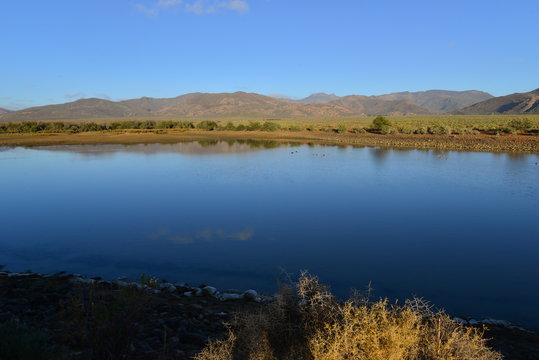
The Nile perch was introduced to the lake to improve fish stock, but now it is responsible for the extinction of many indigenous fish species. Much of the damage is vast and irreversible. Traditional lifestyles of lakeshore communities have been disrupted and are crumbling. There is a consensus among conservationists that if an accelerated push to save the lake is not made soon, this important body of water will cease to sustain life.
Note:
Is this article helpful? must inform us. FOLLOW US
